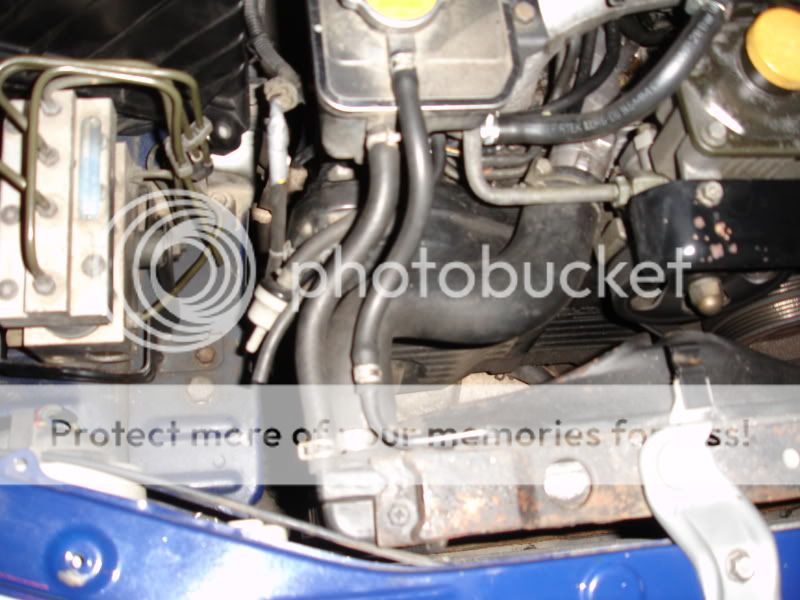
What if the radiator itself leaks near the top, or around the upper hose? You might only lose air when pressure testing, never seeing the leak revealed. Every day is a learning experience for most of us.īTW I have seen leak tests that were not helpful. I have never seen your specific problem, but based on my 68 years of living, I am sure there are a LOT of things I have not seen. But be diligent in your search and the most forward green point on the engine is likely the guilty party. That could be hidden behind something and you might only pick up the green glow farther back where the water has spread due to air flowing. Be aware that where you see the green might not be the source of the leak. I have tracked some really painful leaks this way that I could not find any other way. Come back after dark and break out the UV light. If it doesn't, leave the dye in and drive for 30 minutes. But if so, the pressure test should reveal the location, particularly with the dye. It is possible that you have a leak on the input side of the water pump so that it sucks in air rather than water. And you are not seeing any hydraulic lock or excessive steam in the exhaust, which is also bad if you see these. I can only assume you have no water in your oil, which would be bad. On the ground (or hidden on the back/top of the motor, etc), in the oil, or else directly into a cylinder which would make the truck hydraulically lock and not turn over if water is in a cylinder. If you have a leak, the water has to go somewhere. Or inject an ounce of leak detector (cooling system approved) and pressure test. My first thought would be a pressure test and try to watch carefully. I usually use a credit card to make this painless.

You have to put down a deposit, but it is returned when you return the tester undamaged. They will loan you a really good pressure tester at no cost. hole somewhere that allows air in but no coolant out?Īny help other than one liners saying: "Head Gasket" are very much appreciated, unless you can give me a real explanation as to why this is in fact symptoms of a compromised head gasket.įor pressure testing, auto zone or advance auto parts is your best friend. Sorry this was long, im trying to give as much detail as possible for my benefit and also any one else in the future experiencing these same symptoms(if im able to get it sorted out)

Its somehow just sucking air into the system. No puddles in the drive or anything like that. The only real loss of coolant seems to be from it overflowing on a long highway run and not being consumed by the engine. I pumped up the radiator using a cork with a hole drilled in it and a pressure gauge hooked up.a little ghetto, but that showed a leak from about 30psi to 10 psi in 3 minutes or so.īasically I'm at a bit of a loss. The coolant system pressure test kit is very expensive so I makeshifted one together.

I then did a compression test and my results are as follows:Ĭyl1 179psi, Cyl2 180psi, Cyl3 160, Cyl4 175psi, Cyl5 153psi, Cyl6 182psiĬylinders 3 and 5 seem to be a bit low(right beside each other) but at the same time they are both above the accepted 145psi mark, however are below the 15psi "difference between cylinders" mark.

#98 subaru coolant pushed into overflow full
I took the radiator out and completely cleaned the fins out as they were full of dirt and also ran a hose through both ends of the rad and water flowed through the other end without issue. but it was bubbling at the time, and those bubbles didn't seem to contain carbon dioxide. I first brought it to a mechanic to have the block test(hydrocarbons in coolant) done. Ive since purchased another OEM rad cap which had no change in results. Since owning it, if I constantly(like once a day) syphon the coolant from the reservoir back into the rad, it never overheats and everything is fine.įan/Clutch, Waterpump, Thermostat, Rad cap were all replaced by the previous owner about six months ago(a friend of mine, all using OEM parts). At this point the rad cap needs to be opened to bleed off any excess air in the system and then syphon the coolant from the reservoir back into the radiator(this never happened to me, but the previous owner about 5 times only on long road trips). Eventually, after maybe 2 hours on the highway, after getting off, the engine temp will start to rise. This is because there is air (or possibly gas) filling up the cooling system. The truck drives fine but bubbles and fills up the reservoir with coolant. So I know this is typical symptoms of a blown head gasket but I have done many tests which aren't giving me a definitive answer just yet. Just so you know, I've been reading and reading and searching and searching, not only this forum but many others.


 0 kommentar(er)
0 kommentar(er)
